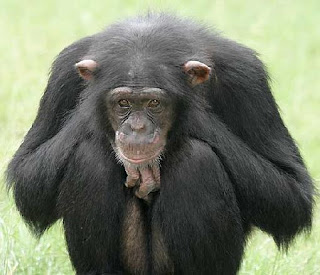The hispid hare is also called the "bristly rabbit" because it has coarse, dark brown hair. It's ears are short, and its back legs are not much larger than the front legs. It weighs about 2.5 kg (5.5 lb). It prefers tall grass-scrubsavanna, in flat, well-drained and thinly forested country. It is notgregarious, but sometimes lives in pairs. Its diet consists mainly of bark, shoots and roots of grasses, including thatch species, and occasionally crops.

The main reasons for its decline include habitat loss, mainly for cultivation, forestry, grazing and the burning of thatch; human settlement; hunting for food and to protect crops; and predation by dogs. In addition, human-induced changes in seasonal flooding have favored the later stages of vegetationsuccessionwhich the hispid hare does not prefer.
Hispid Hare is widely found in Uttar Pradesh, Bihar, Madhya Pradesh, West Bengal and Assam. They are also spotted at Manas National Parkand Jaldapara Wildlife Sanctuary in West Bengal.
Habitat : Hispid Hare prefers low grassy areas to live.
Diet : Hispid hare is herbivorous animal and feeds on bark, shoots, grass roots and crops.
Reproduction : Gestation period rests for 25- 50 days. Litter size is 2-5 , with possibly 2- 9 litters per year. Young ones are usually born between January to March.
The current status, distribution, habitat use and existing threats to the endangered hispid hare (Caprolagus hispidus) in the Royal Suklaphanta Wildlife Reserve, Nepal, were investigated. The population density of hispid hare recorded in the study area was 1.01 animals/ha. Hispid hare pellets were found in the following grassland sites: Suklaphanta, Barkaula and Piparia. Hispid hare showed zero preference for short grassland, riverine forest and broadleaved forest. Grass species composition was similar in short grassland and tall grassland, but no pellets were found in the short grassland during the study period. This indicates that hispid hares select habitats that provide both shelter and food. The exiting threats to hispid hare were fire, invasion of grass species by broadleaved trees, grazing, flood, predation, and thatch collection.
Now, sporadically found in Bangladesh, India, Nepal and possibly Bhutan, it was at one time widely distributed along the foothill region of the southern Himalayas from Uttar Pradeshthrough southern Nepal, the northern region of West Bengal toAssam and into Bangladesh.
A significantly large number is found in the extensive grasslands of Sukla Phanta Wildlife Reserve. It prefers tall grasslands, thinly forested country and takes refuge in marshy areas or grass adjacent to river banks during the dry season, when these areas are susceptible to burning.
